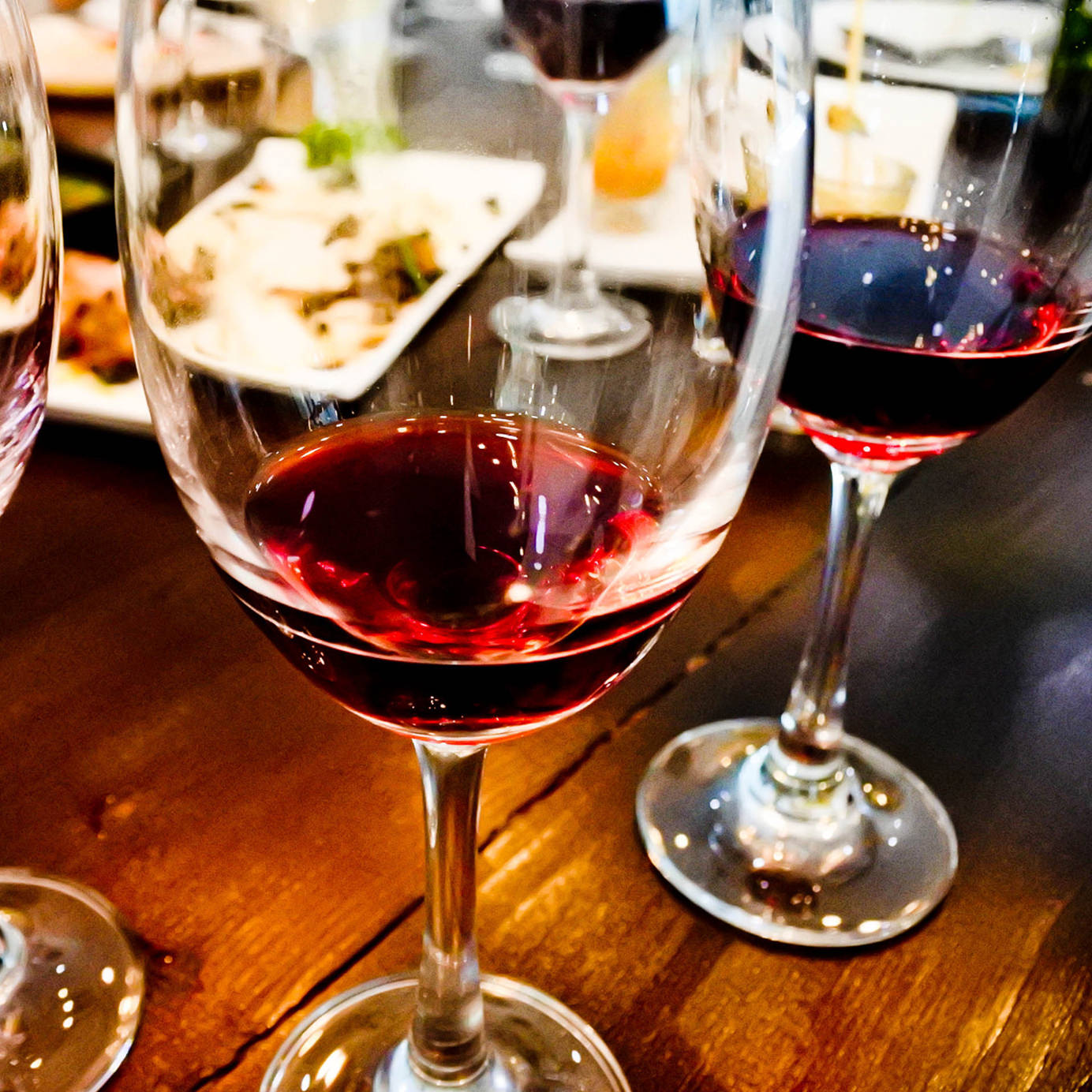
If you have participated in any form of social media in the past three years, then you know the meal kit delivery trend isn’t just happening — it’s taking over. A few clicks and a credit card are all you need to get anything from lasagne Bolognese to vegan cupcake ingredients delivered to your door.
In a new, dangerous twist, wine is now part of the delivery kit suite, too.
Blue Apron, king among meal kits with 40 percent of the market share in November 2017, offers a wine option as well. The concept makes sense: Every month, for a set price ($65.99, before tax), Blue Apron sends a box of six wines to pair with that month’s meals.
I’ll be the first to admit that I am a huge delivery service skeptic, especially when it comes to wine. Shopping for good wine is confusing enough without adding interstate shipping, online-only sales, and “exclusive” producers or collaborations into the process. How can you figure out a wine’s pedigree if it’s made only for Blue Apron’s club? Couldn’t it just be simple swill re-bottled with a fancy label?
Ever a glutton for punishment and experimentation, I decided to test out Blue Apron’s wine pairings with its January subscription box. The results were surprising, to say the least.
The Pairings
Unlike weekly meal kits, Blue Apron’s wine addition is a monthly service shipped and billed separately. Each month, Blue Apron provides six selections in 500-milliliter bottles, which are approximately two-thirds the size of a standard wine bottle. Subscribers can let the company choose their wines, or select from 24 rotating options on Blue Apron’s website.
The wines on rotation aren’t available anywhere else, and Blue Apron has a winemaker on staff to curate the bottles in conjunction with local and international markets, as well as its seasonal recipes.
Each bottle has a label loaded with information on grape variety, oak aging, and a flavor profile. Unlike a standard shelf talker, the bottles I received actually looked as if they were written by real wine drinkers. Nice work, Blue Apron.
The January selection was an even split between whites and reds, featuring wines from New Zealand, California, and Italy and six different grape varieties including Nebbiolo, Cabernet Sauvignon, and Riesling. Overall, a nice level of diversity considering many wine clubs often go heavy on supermarket staples like Pinot Noir or Malbec.
Crunching the Numbers
At $65.99 per six-pack per month, pre-tax, the monthly wine box works out to about $11 per bottle. That’s not a bad deal, but it’s not an inexpensive monthly cost, either. Blue Apron’s two-person, three-recipe subscription is $65.95 per week, meaning the wine pairings cost the same as about one more week’s worth of meals. That said, compared to the handful of sub-$15 wines on offer at most grocery stores, Blue Apron’s wines are solid, especially considering that $11 includes shipping directly to your door.
Blue Apron’s selections come from an array of countries and include famous appellations like Napa Valley, Bordeaux, the Loire Valley, and countless others. Depending on where you live, that may be more diversity than the local grocery store can deliver.
At 500 milliliters, however, the size of Blue Apron’s wines is noticeably smaller than what you’re used to getting per bottle. The company contends that 500 milliliters is enough wine for two people, but I think that depends on how much you drink. If you’re planning to have a glass while cooking, 500 milliliters is going to disappear in seemingly two sips at the table — and that can make even the best wine pairing seem disappointing.
The Taste Test
I decided to conduct a delightfully unscientific test. I was joined by Advanced Sommelier Alexandra Masanotti, of Jean-Georges in NYC, plus a handful of civilian tasters to weigh in on what did and did not work. We ranked each wine on three criteria: Does it taste great? Does it remind us of the grape variety or region? And does it over-deliver for $11 per bottle?
The whites included a New Zealand Riesling from Mount Beautiful, a Chenin Blanc–Chardonnay blend, and a Sauvignon Blanc. We ranked all as solid values and good for food pairing. Bright and high-acid, none of the wines had a heavy oak character, making them easily pairable with most recipes. The lone off-dry wine was accurately and clearly marked as slightly sweet — a bonus not offered on many store shelves.
The red wines included a Langhe Nebbiolo, a well-loved value region in northern Italy; Washington State Cabernet Sauvignon; and an Aglianico from central Italy. The reds weren’t a home run quite like the whites, but we loved the Cabernet Sauvignon and Nebbiolo. The Aglianico didn’t remind us of traditional Aglianico wines, nor did we find its pairing key accurate.
Overall, five of the six January selections met our criteria with and without food. The selections change each month from a group of 24 wines, so we may have lucked into a fantastic selection, but we think Blue Apron’s combination of in-house curation and partnering with wineries on exclusive bottles is a winning formula.
https://www.instagram.com/p/BZW__1YHVEt/?hl=en&taken-by=blueapron
The Results
If you’re looking to experiment with wine, but are busy or don’t live in a metropolitan area with great wine selection (like me!), Blue Apron’s concept is win-win. New producers, solid wines, and $11 bottles including delivery is tough to beat.
While Blue Apron’s wine partners bottle-specific wines only for Blue Apron, they’re great indicators of a brand’s quality. Since the wineries also release their own wines separate from Blue Apron, the service provides a nice opportunity to find a new favorite producer or style to seek out long after you’ve finished your delivery kit.
In short, do it. I was shocked by how much the service won me over. I won’t be abandoning my local wine shops, but you can bet your credit card I won’t be sending sidelong glances at mail-order wine kits anymore, either.
